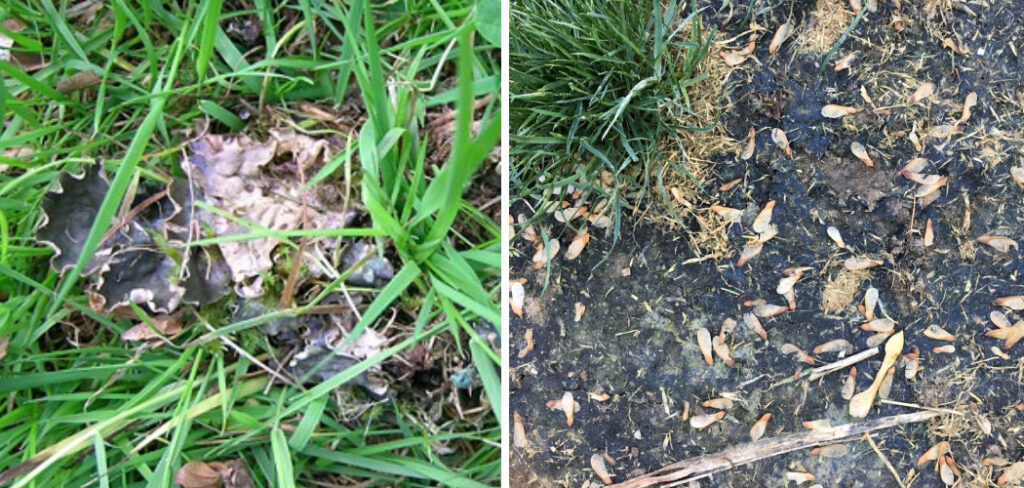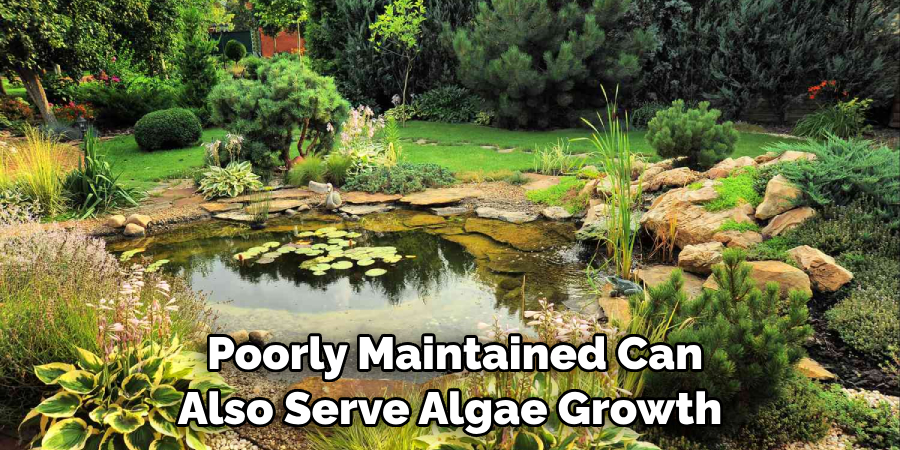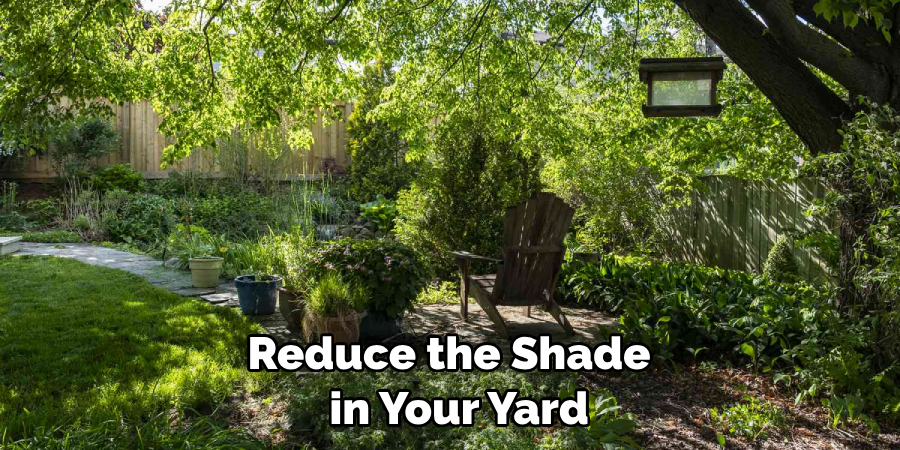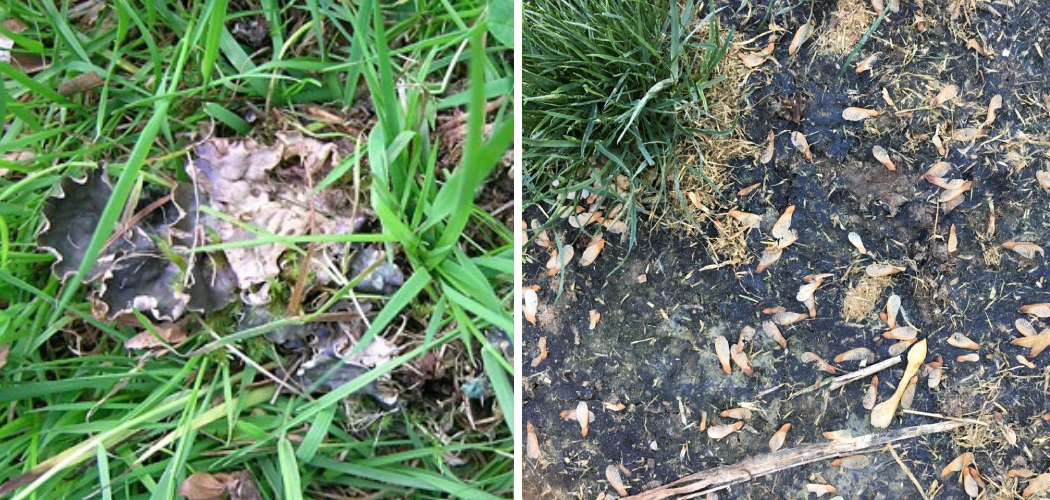Algae can cause a great deal of damage to your yard, leading to discoloration, staining, and an unhealthy-looking lawn. Algae also makes it difficult for grass and other plants to get the nutrients they need from the soil, leading to stunted growth or even plant death. Removing algae from your yard is essential for maintaining a lush, beautiful lawn that is safe and healthy for everyone to enjoy.

Getting rid of algae in your yard has several advantages. First, it will help keep your lawn and garden clean and neat. Algae can overgrow and spread across leaves, rocks, and soil, creating an unsightly mess. It can also be difficult to mow through or work with when gardening. Removing the algae helps maintain a neat and attractive outdoor space.
You can find step-by-step instructions on how to get rid of algae in your yard in this blog article.
Step-by-Step Processes for How to Get Rid of Algae in Your Yard
Step 1: Inspect Your Yard
The first step to getting rid of algae in your yard is to assess the situation. Look at where the algae are growing and determine if it’s an issue of too much moisture or poor drainage in certain areas. If you can identify where the moisture is coming from, you can start addressing that problem first.
Step 2: Keep It Clean
To prevent algae growth in your yard, keeping the area clean and free from debris is important. This means regularly removing grass clippings, leaves, and other organic materials that can provide a source of nutrients for the algae. Additionally, if you have standing water in your yard, such as puddles or ponds, keep the water clean and free from excess nutrients.
Step 3: Treat With Chemicals
If you’re dealing with an algae problem that won’t go away with just cleaning, it may be time to consider using chemicals to eliminate the algae. Copper sulfate is one product that has been effective in treating algae in yards and other areas. Make sure to follow the instructions closely when using any chemical products, and never apply more than what is recommended.

Step 4: Plant Native Plants
In some cases, replacing your existing landscaping with native plants can help reduce algae growth in your yard. Native plants tend to be better adapted to local conditions and will use up much of the nutrients in the soil, preventing them from being available for the algae to grow.
If you’re dealing with an issue of poor drainage or excess moisture in your yard, then improving the drainage is key to reducing algae growth. Ensure that all gutters and downspouts direct water away from the home and that the soil can absorb and drain away water quickly.
Step 5: Increase Sunlight
Algae need shade and moisture to thrive, so increasing sunlight in your yard can help control algae growth. Trimming trees or removing other obstacles blocking natural sunlight will also help reduce algae growth.
In addition to providing more sunlight, reducing the amount of shade and moisture in your yard can also help reduce algae growth. If trees, shrubs, or other plants create too much shade, consider trimming them back. Keep any water features, such as ponds, clean and free from excess nutrients and organic matter.
Step 6: Try New Landscaping Techniques
If the previous steps aren’t helping to reduce algae growth in your yard, it may be time to try new landscaping techniques. This can include anything from creating a drip irrigation system to using mulch or gravel for pathways. To determine which technique works best for your yard, consult a professional landscaper.
If the algae growth in your yard is still out of control, you should introduce some natural predators to help keep it under control. Fish such as goldfish, koi, or minnows can help reduce algae levels and are relatively easy to maintain.
Step 7: Consider Professional Help
If all else fails, it may be time to call a professional for help getting rid of the algae in your yard. A professional landscaper or lawn care service can advise you on which techniques are best for your particular situation and can help implement a plan to get rid of the algae once and for all.
By following these steps, you should be able to get rid of algae in your yard once and for all. Algae can be unsightly and can quickly take over a yard.
Tips for How to Get Rid of Algae in Your Yard

- Wear protective clothing such as long pants, closed-toe shoes, and gloves when working around algae-infested areas.
- Eye protection is also recommended since some types of algae can contain toxins that may irritate the eyes.
- Avoid contact with water in or near an algae-infested area whenever possible to reduce the risk of exposure.
- Do not drink, swim, or fish in any body of water with visible signs of algae growth.
- Seek medical attention immediately if you experience any physical symptoms after exposure to a potentially toxic type of algae.
- Have children and pets avoid contact with lakes, ponds, or rivers with excessive algae in the water.
- Use caution when applying chemicals to eliminate algae in your yard, as they can harm humans and other living things if not used correctly. Follow the manufacturer’s instructions for personal safety and optimal results.
By following these tips, you can safely get rid of algae in your yard without putting yourself or others at risk for harm. Knowing the potential hazards of working around and using chemicals for algae removal is important.
How Do Environmental Conditions Affect the Likelihood of an Algal Bloom Occurring on Your Property?
Environmental conditions are an important factor when it comes to getting rid of algae in your yard. Algae thrive in warm temperatures and sunlight, so if your property has consistently sunny days with warm temperatures, you may be more susceptible to algal blooms. Additionally, fertilizer runoff can cause nutrient-rich areas of water that can further contribute to algae growth.
Poorly maintained water features and standing water can also serve as breeding grounds for algae growth.

So, suppose you’re looking to prevent the prevalence of algae in your yard. In that case, it’s important to check that any nearby fertilizers aren’t running off onto your property and to maintain outdoor watering features regularly. Additionally, areas of standing water should be reduced or removed altogether, as these are prime spots for algae to grow.
Once environmental factors have been addressed, you can take further steps to remove the algae that are already present in your yard.
What Maintenance Tasks Should You Be Doing to Ensure Algae Won’t Return in the Future?
To ensure that the algae don’t return in the future, you should perform regular maintenance tasks around your yard. These include:
- Remove standing water from your yard; any areas of low-lying ground or where water accumulates should be filled in and raised with soil or gravel.
- Make sure that gutters are clear and not overflowing; make sure that the downspouts are channeling water away from your home.
- Reduce the shade in your yard; cut back trees or bushes blocking sunlight in certain areas.
- Ensure that all outdoor faucets and fixtures are securely turned off since any dripping water can lead to algae buildup in the area.
- Avoid overwatering your lawn; if you have an irrigation system, ensure it is set up correctly to minimize water runoff.

By performing these regular maintenance tasks around your yard and home, you can keep algae from forming in the future.
How Can You Prevent Algae From Entering Your Yard in the First Place?
The best way to eliminate algae in your yard is to prevent it from entering. To do this, limit the amount of run-off and standing water in your yard as possible. This can be done by:
- Ensure gutters are clean so they will properly drain away water after a storm.
- Properly grade your yard so there is no standing water after a rainstorm.
- Planting native plants which are adapted to your climate and have deep root systems to absorb excess moisture from the soil.
- Applying mulch around plants helps retain moisture in the soil while also preventing weeds from taking over, which would create standing water.
- Installing a rain barrel to catch and store water from your roof can be used to water plants instead of allowing them to run into the yard.
Following these steps will help keep algae from entering your yard in the first place, saving you time and energy when it comes to getting rid of it later on.
Conclusion
In conclusion, getting rid of algae in your yard is challenging but rewarding. The key to success is keeping the algae-prone areas clean and dry, introducing natural predators such as fish and snails, removing any standing water, using iron or copper sulfate, and avoiding chemical treatments.
Following these steps will help you significantly reduce the amount of algae in your yard. With regular maintenance and the help of natural predators, you can keep your yard from becoming overrun with algae. This article has been beneficial for learning how to get rid of algae in your yard. Make Sure the precautionary measures are followed chronologically.
About
Outdoor Fixes is a distinguished figure in the world of Diy design, with a decade of expertise creating innovative and sustainable Diy solutions.
His professional focus lies in merging traditional craftsmanship with modern manufacturing techniques,
fostering designs that are both practical and environmentally conscious. As the author of diy,
outdoorfixes delves into the art and science of outdoorfixes-making, inspiring artisans and industry professionals alike.
Education RMIT University
(Melbourne, Australia) Associate Degree in Design (Outdoor Fixes) Focus on sustainable design, industry-driven projects,
and practical craftsmanship. Gained hands-on experience with traditional and digital manufacturing tools, such as CAD and CNC software.
Nottingham Trent University
(United Kingdom) Bachelor’s in outdoorfixes.com and Product Design (Honors) Specialized in product design with a focus on blending creativity with production
techniques. Participated in industry projects, working with companies like John Lewis and Vitsoe to gain real-world insights.
Publications and Impact
In diy, Outdoor Fixes his insights on indoor design processes, materials, and strategies for efficient production.
His writing bridges the gap between artisan knowledge and modern industry needs, making it a must-read for both budding designers and seasoned professionals.

